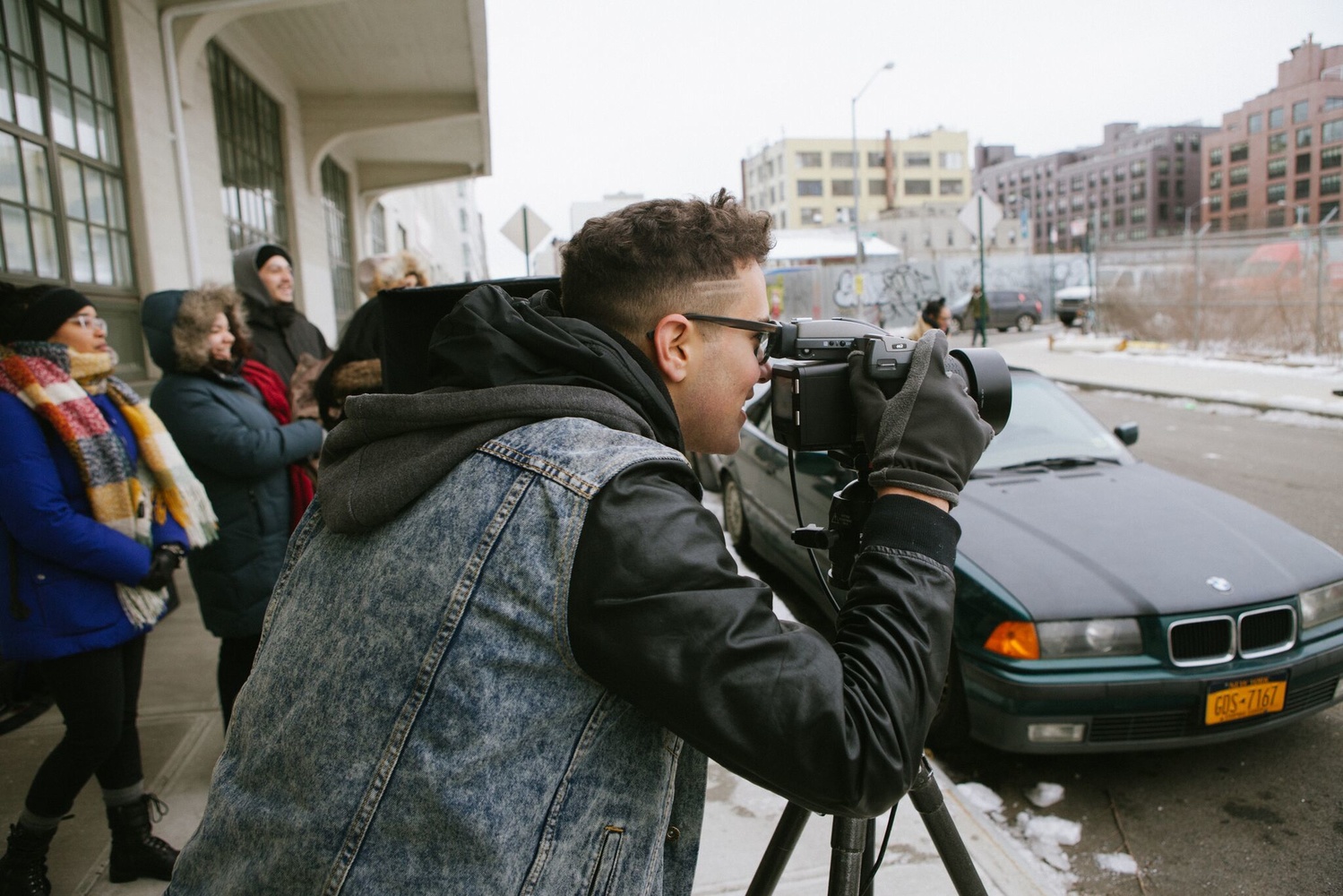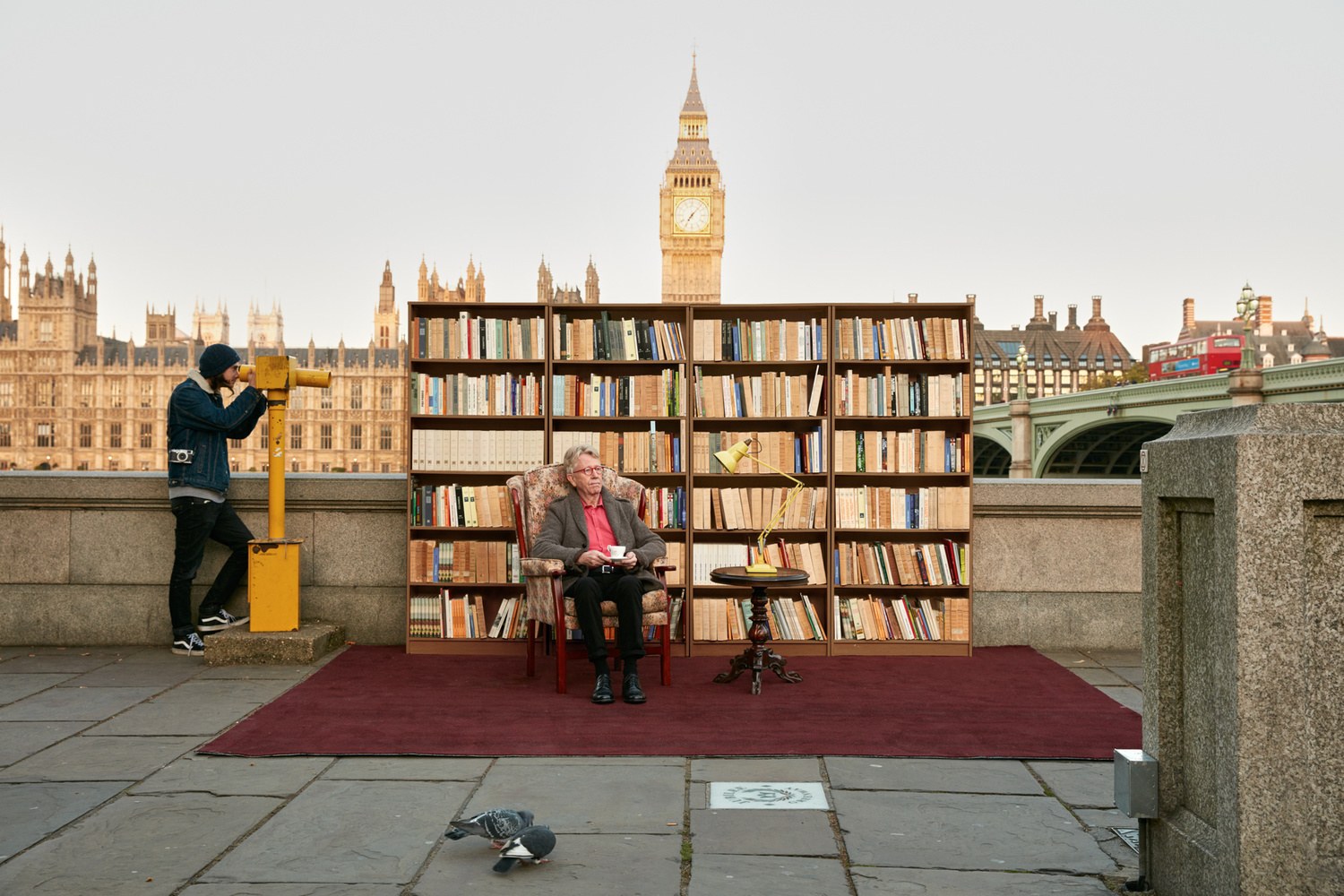Justin Bettman is a portrait and editorial photographer based out of NYC and I first came across his #SetintheStreet project while scrolling through Facebook. I thought it was a fun, creative and unique project that was worth sharing! I love that the art kind of lived on after the shoot itself with him leaving the sets in place for people to engage with. So cool, right!?! With that said, I decided I had to interview him to find out what are his processes in creating these photographs.
Check out the images below and let's see what we can learn from him.


Justin grew up in Northern California and his first experience with photography was from borrowing his dad's camera to photograph bands. From there, his interest in photography kept growing and eventually evolved into a focus on portraiture and staged scenes.


When asked when and how he started on #setinthestreet project, he replied, "Prior to #SetintheStreet, I was doing large scale exterior tableau scenes and I wanted to experiment with interiors but I couldn't find the perfect location. I met with set designer Gozde Eker and discussed collaborating, but I couldn't afford a photo studio to build a set. So I started thinking and came up with the idea of just using the side of an exterior wall instead of building a set flat. The first set was built in the summer of 2014 in Bushwick, Brooklyn NY."


Planning these shoots looked like a logistical nightmare and personally, I would not even know where to begin if I were to attempt something like it. Justin agreed, saying that the hardest part of the project is always the production. Finding a location, sourcing the furniture, casting the models, and finding wardrobe for them takes up a lot of time and effort. However, as the project evolved, so has his team, but for the first six or seven shots it was very grassroots. He also said, "I'd spend months looking for the right furniture, sometimes literally on the sidewalk in NYC, until I found what I was looking for. As the project has traveled internationally, I always try and find iconic locations which can be hard to permit. Sometimes, I miss the days of just doing the sets guerilla style and building the sets overnight, shooting in the morning, and just leaving the sets."


When asked which was his favorite and most memorable shoot, he replied, "It's tough to say, they all have so much sentimental meaning since they all take so long to create. I think the most magical set may have been Times Square. I had done four sets in NYC illegally so when the Times Square Alliance wanted to give me permission to do a set in Times Square, it was pretty surreal."


Justin's go to gear for this project is typically the Canon 5Ds on the 24-70 f/2.8. For a few of the sets, he also had the opportunity to shoot them on a medium format body. Lighting wise, right from the beginning he made a conscious decision to only use natural light. However, outside of this project, he uses Broncolor.

When choosing a location, his main aim is that he always wants an interesting juxtaposition between the interior and the exterior. "When I first started the project, I only used existing walls so it was always tough finding a wall that was at least 12 feet long, didn't have any windows, and had a large sidewalk. For some of my more recent sets, I've decided to use flats so I have more flexibility with the locations. And when creating the sets internationally, I like to find iconic locations that will fit well around the set."


The creation of these sets are always different for every shoot. "The sets I first did in NYC took about a month to create between finding the furniture, casting the talent, finding a location, and executing the shoot. Originally it was very guerrilla style, just me and a couple friends unloading a U-Haul at three in the morning and just setting up on the street. I think the project looked so professional that cops just assumed I had a permit. As I mentioned before, for Times Square I was invited to do the project by the Times Square Alliance so they handled all the permitting with the city. When doing the project in different countries, I'll usually bring one American assistant and then work with a local team. I just did a set in Prague and worked with this amazing production company the Creative Embassy."

Shooting in a public area usually draws a crowd and people who walk by Justin's sets are usually pretty confused with what's going on. This motivated him to leave his sets up for other people to interact with independently after his shoot. He created a hashtag #SetintheStreet on Instagram where you can see other people interacting and taking photos with his left behind sets.

When asked if he works much in Photoshop after taking the images, Justin replied, "There isn’t a ton of post-production. When I share the project in meetings, people are often surprised that I actually went to all of the locations that I share, but that's the point of the project. I could Photoshop them but whats the fun in that!"


This project is quite time-consuming though so Justin is currently unable to dedicate himself full time to it. However, he could see himself doing it for another 10 years and making it into a cool photo book.


To other up and coming photographers, Justin stresses to keep shooting as mastering the craft of photography takes a long time and it's just the matter of putting in the time.
Again, huge thanks to Justin Bettman for taking the time to have this interview and sharing his process of creating these really cool images!
If you are not already following him, check out his main body of work on his website, Facebook, Instagram or more from the Set in the Street project here.
Images used with permission of Justin Bettman.







This is so freaking cool, and it's such a good reminder to be ambitious with personal projects. So many articles focus either on gear or the doom & gloom of a potentially failing industry, and it comes as a breath of fresh air that you can still do things because you genuinely just want to do something, especially on this scale. Thanks!
I totally agree. Sometimes we need to be reminded to actually do work that we are passionate about (:
Pretty cool, although I like the first example best where he built the set around an existing element.
Looks like a lot of fun. Good for him.
FYI your improper use of capitalization in the title is arbitrary and makes it needlessly confusing. Either "with" needs to be capitalized or "The" shouldn't be, while any short title within a title should be in quotation marks.
I can only dream of this. Way beyond my possibilities!
Why would you say so?
Doing these sets on the streets can be very expensive. This makes me think that after building the sets, and taking the pictures, one could wish there was something else we could do to emotionally justify the logistics involved in these productions.